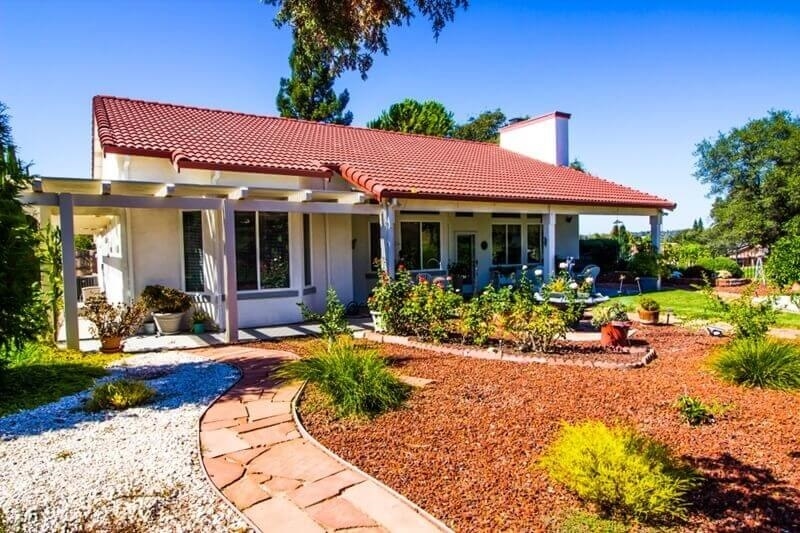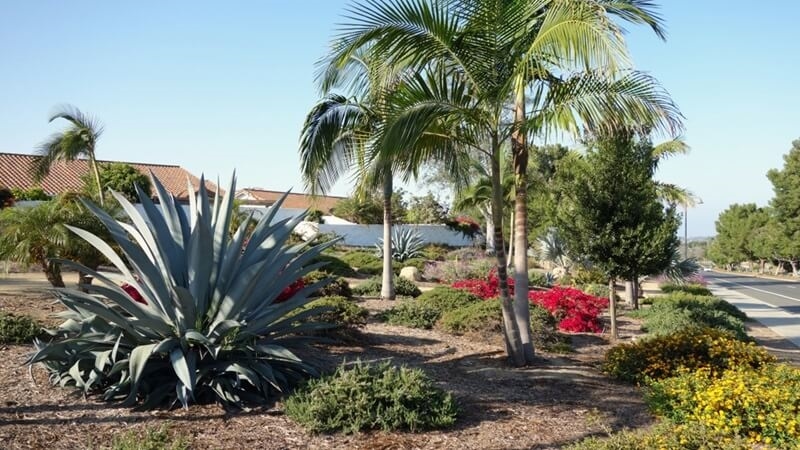
Water bills keep climbing. Summers feel hotter, and in many places, rain shows up less than it used to. If you’ve got a yard, you already know the struggle: keeping grass green and plants alive starts to feel like a full-time job. The good news? You don’t have to fight nature. You can work with it. And that’s where drought tolerant landscaping comes in.
This approach isn’t just about survival. It’s about creating a beautiful, functional outdoor space that thrives even when water is scarce. You end up saving money, saving effort, and doing a small bit for the environment too. Not bad, right?
Let’s dig into practical ideas you can actually use — whether you’ve got a small backyard or a sprawling front lawn.
Here’s something most people overlook. Healthy soil is the foundation of any landscape, but it’s especially critical in dry conditions. Poor soil doesn’t hold water well. The trick? Improve it with compost, mulch, and organic matter.
Mulch, in particular, works like magic. It keeps moisture from evaporating, regulates temperature, and stops weeds from stealing water from your plants. Spread a couple of inches around trees and flower beds, and you’ll notice a big difference in how long the ground stays damp.
Lawns look nice, but let’s be honest — they’re thirsty. They demand constant watering, mowing, fertilizing. If you’re serious about saving water, think smaller. Shrink your lawn and replace parts of it with gravel paths, native shrubs, or decorative rocks.
Even better, swap traditional turf with drought-resistant grasses. Varieties like buffalo grass or Bermuda grass need far less water. You still get that green look, just without the guilt (and the high bills).

This might be the fun part. Picking plants. Forget the ones that sulk the moment the sprinklers turn off. Go for desert friendly plants that laugh in the face of heat. Think succulents, agave, lavender, or ornamental grasses. They not only survive but actually look better when the sun blazes down.
If you’re not sure what works in your region, check with a local nursery. They’ll point you toward natives — plants already adapted to your climate. That means less water, less fuss, and a higher chance of success.
Here’s a smart move: plant in zones. Put all your thirsty plants together in one area so you don’t waste water on the whole yard. Place hardy, low-maintenance ones elsewhere. This way, you can water more efficiently without overdoing it. It’s like putting your kids with similar bedtimes in one room — easier to manage.
Sometimes, the best way to save water is not to plant at all. Hardscaping — using stone, gravel, pavers, or even decorative concrete — reduces the space that needs watering. Don’t think of it as giving up on greenery. Think of it as adding contrast and character. A gravel walkway through native plants looks elegant. A stone patio surrounded by succulents feels modern and cozy at the same time.
Planting trees in the right spots makes a huge difference. They shade your house (lowering cooling costs) and protect smaller plants underneath from harsh sun. Native trees are best since they’re built to handle local conditions. Bonus: they make your yard look more established and inviting.
You’ve probably heard the term, but maybe it sounds intimidating. The truth is, it’s not. Xeriscaping for beginners is simply designing your yard with water efficiency in mind. No, it doesn’t mean covering your entire yard with rocks and cactus (unless that’s your vibe). It means planning layouts, choosing the right plants, and installing efficient irrigation.
Think of it as landscaping with common sense. Do the work once, and you get a yard that mostly takes care of itself.
Gone are the days of dragging a hose around or running sprinklers that spray more sidewalk than soil. Drip irrigation is the way forward. It delivers water right to the roots, slowly and consistently. Less waste, healthier plants.
Pair that with a timer, and you’ll never forget to water. Even better, water in the early morning or late evening when less evaporates. Small tweaks, big savings.
Worried that a water-saving yard will look boring? Don’t be. Drought-tolerant plants come in a huge variety of colors, shapes, and textures. Silver-leafed sage, spiky agave, purple lavender, yellow coreopsis — mix them together, and you’ve got a garden that looks intentional, not sparse.
Even gravel and stone come in colors. Reds, whites, deep grays. Use them like an artist uses paint. Your yard can be low-water and still stunning.
Sometimes, saving water means rethinking what your outdoor space is for. Instead of trying to mimic a lush English lawn, ask yourself: what do you really want? A place for kids to play? An outdoor dining nook? A peaceful spot to read?
Design around those goals. A drought-proof garden design isn’t about copying a magazine photo. It’s about creating a space that fits your life without guzzling resources.
Beyond plants and design, there are little habits that make a big impact. Collect rainwater in barrels. Reuse gray water if local rules allow. Pick up a moisture meter so you only water when the soil actually needs it.
Even watering deeply but less often helps roots grow stronger and more drought resistant. These simple tricks, layered together, turn ordinary yards into water wise gardening spaces.
Let’s talk money, because that matters too. Replacing a traditional lawn with native plants and hardscaping might cost more upfront, but the savings stack up. Lower water bills. Less fertilizer. Fewer hours mowing or maintaining. Over a few years, you more than make your money back.
And if you’re in an area with water restrictions, it also saves headaches. No more worrying about fines for overwatering or watching your lawn go brown mid-summer.
There’s another bonus. Drought-tolerant landscapes are better for the planet. They conserve water, support local wildlife, and reduce chemical use. Birds, bees, and butterflies love native plants. Less lawn mowing means fewer emissions. It’s small, but when thousands of households do it, it adds up.
Let’s clear up a couple of misconceptions.
Myth: Drought-friendly yards look dry and barren.
Truth: With the right mix of plants and design, they can be colorful, vibrant, and full of life.
Myth: It’s too complicated.
Truth: Start small. Replace one flower bed or corner of the yard. It’s easier than it looks.
Myth: Only desert regions need it.
Truth: Water costs money everywhere. Even in wetter climates, using less is still smart.
If you’re overwhelmed, start simple. Pick one area — maybe the front yard — and experiment. Add a few succulents, lay down mulch, swap grass for gravel in a small section. See how it feels. Once you notice how low-maintenance and cost-effective it is, you’ll want to expand.
And don’t be afraid to mix styles. A few native wildflowers among succulents. A modern stone path next to lavender beds. This is your canvas.
So here’s the big takeaway: a water-saving yard doesn’t mean giving up beauty. It means designing smarter, choosing plants that belong, and making your outdoor space easier to care for. With low water landscaping ideas, anyone can turn a high-maintenance yard into one that thrives on less.
Whether you’re just dipping your toes into this or ready to overhaul your entire yard, the path forward is clear. Work with nature, not against it. Your wallet, your schedule, and yes, the planet, will thank you.
This content was created by AI